I need help calculating downtime in between processes. It needs to be grouped by IMPORTID and then IMPORTREQUESTID. IMPORTREQUESTID corresponds to different phases within the IMPORTID request. So, for example in below data set I need my SQL query to find the highest or Latest ENDDATE amongst IMPORTREQUESTIDs and then subtract STARTDATE (lowest) of next row from it or rather min(STARTDATE) of next cluster of IMPORTREQUESTID. I've already sorted my query to sort IMPORT ID and IMPORTREQUEST ID in descending order. Should I use "CONNECT BY"? What would be the best method to group by and find highest ENDDATE in rows of IMPORTID and IMPORTREQUESTID and then subtract the lowest STARTDATE from it, within next immediate row or cluster of IMPORTREQUESTIDs? Basically, I am trying to calculate the gap time between when a process is finished and when next process starts. See below table for sample data:
IMPORTID IMPORTREQUESTID STARTDATE ENDDATE
1156 63833 4/23/2017 18:18 4/23/2017 18:18
1156 63833 4/23/2017 18:18 4/23/2017 18:18
1156 63832 4/23/2017 17:56 4/23/2017 17:57
1156 63832 4/23/2017 17:56 4/23/2017 17:57
1156 63832 4/23/2017 17:56 4/23/2017 17:57
Expected result: Would be for the above query to return to me the SUM of all differences obtained for entire set of rows and display per IMPORTID in the end:
ImportID TOTAL Downtime
1156 21 mins
OR even better:
a detailed breakdown with the gaps in seconds between each unique IMPORTREQUESTID (Enddate of above row and startdate of below row) as explained and return the following unique rows (max ENDDATE of a phase and the proceeding min(startdate) of next phase):
IMPORTID IMPORTREQUESTID STARTDATE ENDDATE DIFF
1156 63833 4/23/2017 18:18 4/23/2017 18:18 21 mins
1156 63832 4/23/2017 17:56 4/23/2017 17:57
